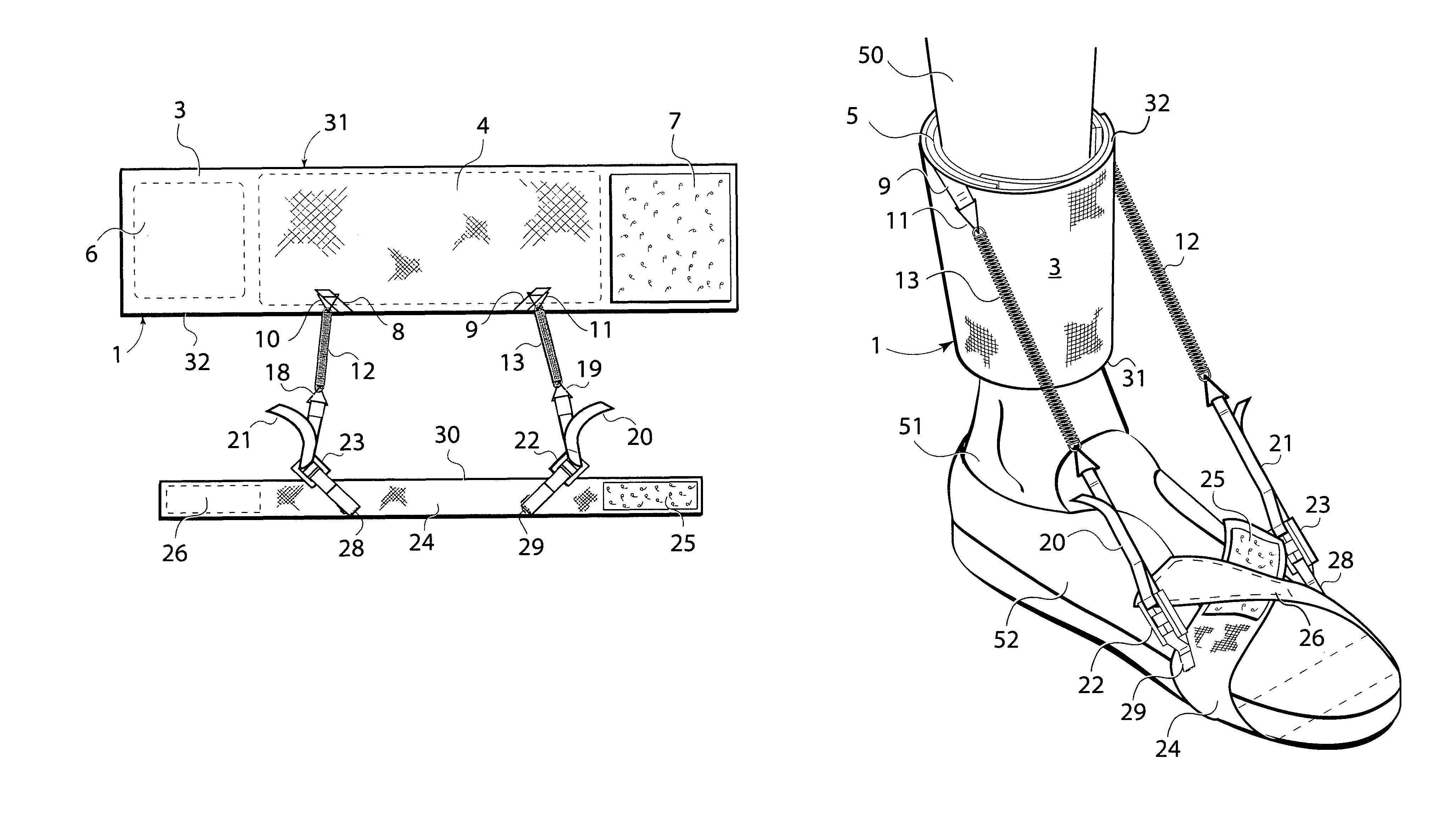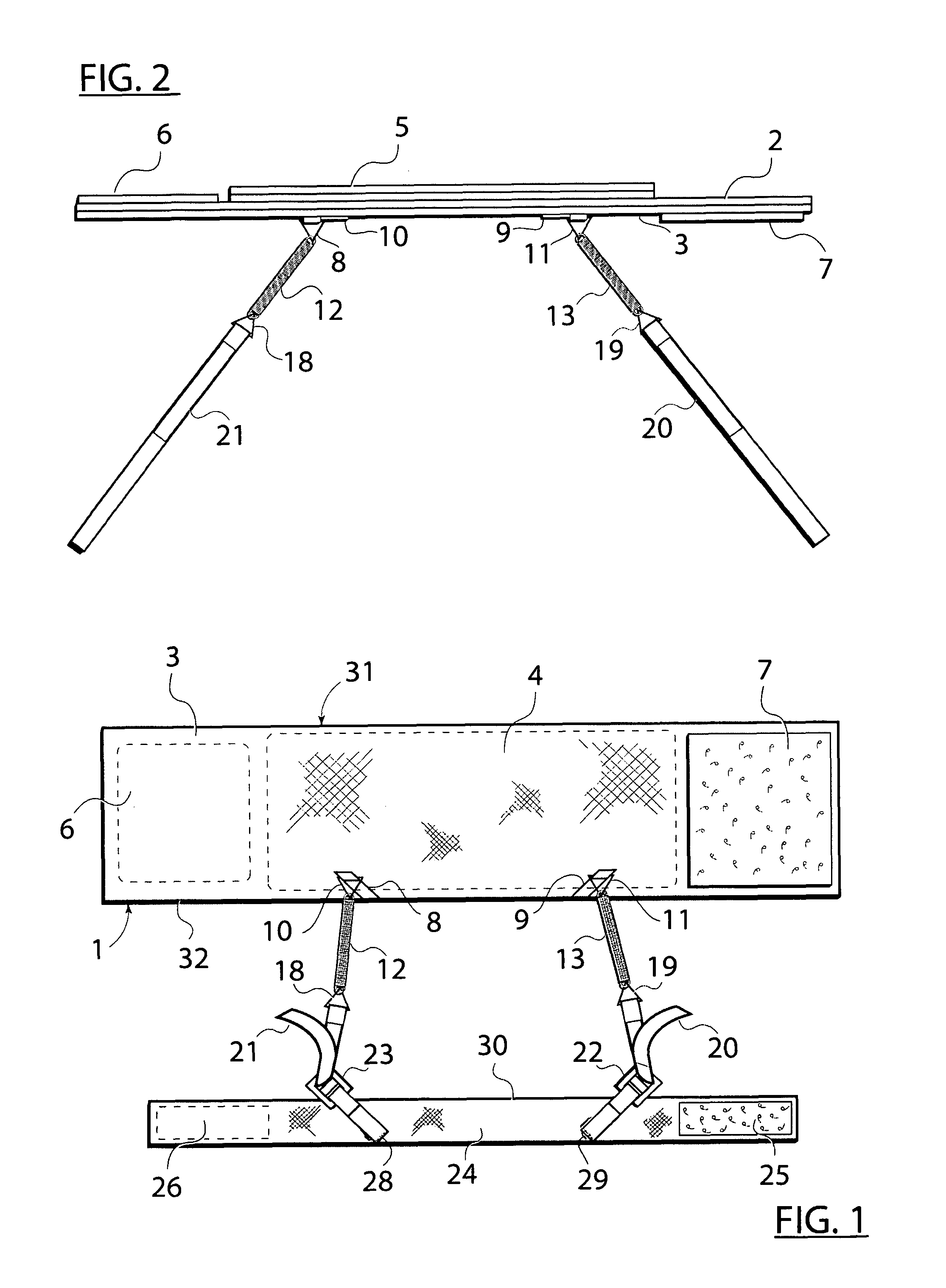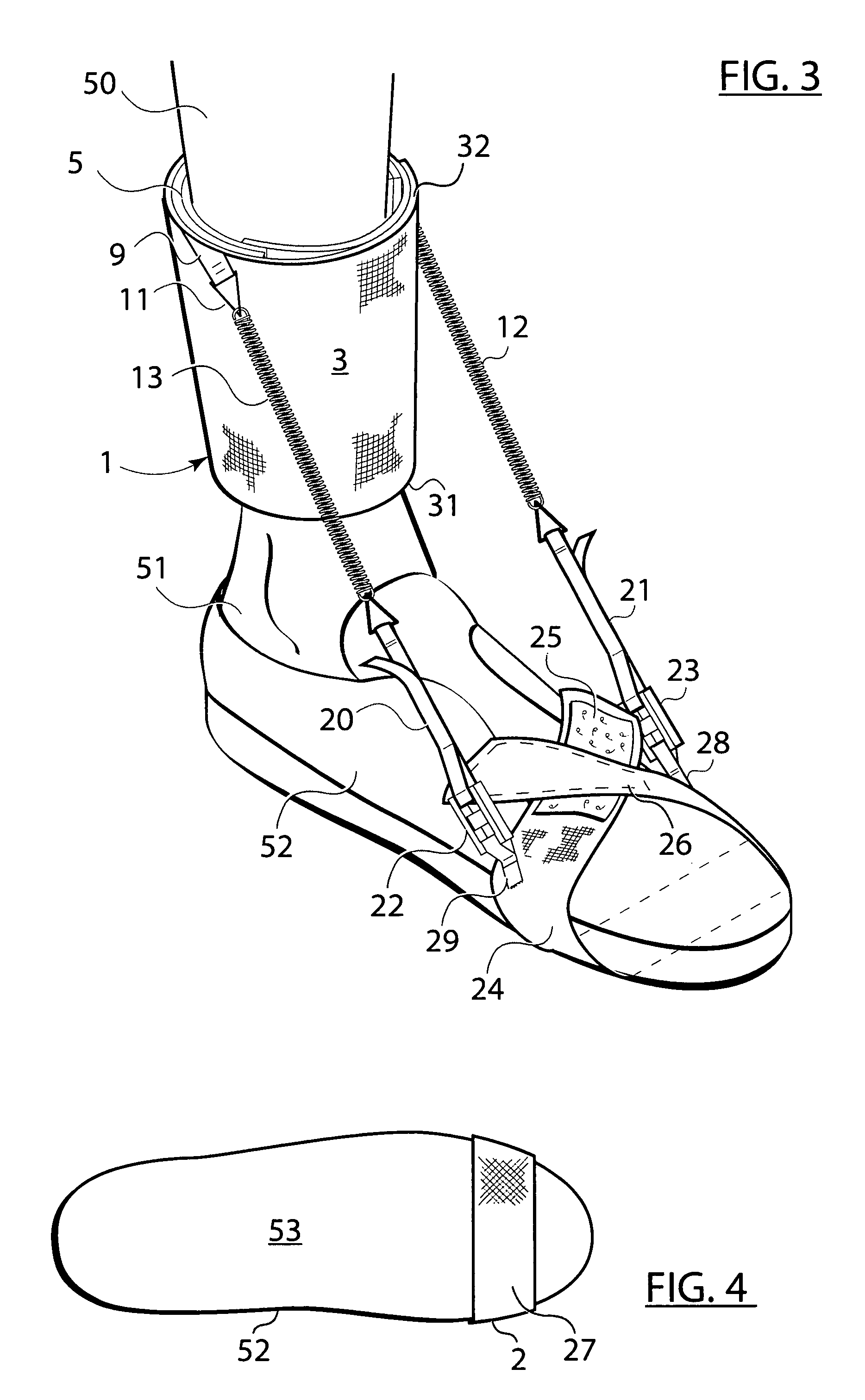Orthotic lift apparatus
a technology of orthopaedic lifts and lifting components, applied in the field of orthopaedic lifts, can solve the problems of dragging the front (toe) portion of the foot along the ground, affecting the function of the body, etc., and achieves the effects of convenient use, reliable and long-term use of the foot lift component, and convenient attachmen
- Summary
- Abstract
- Description
- Claims
- Application Information
AI Technical Summary
Benefits of technology
Problems solved by technology
Method used
Image
Examples
Embodiment Construction
[0020]The device may be viewed as having two parts. 1) An ankle cuff with soft foam inside, two springs, each spring with an adjusting strap made up of a hook section and a loop section. 2) A foot strap with a hook section and a cooperating loop section fastener and two buckles to engage the one each of the adjusting straps on either side of the foot. Once adjusted, by moving the length of the adjusting straps equally, the user can walk with no fear of tripping.
[0021]In use the ankle belt 1 is position on the user's leg, inverted to the display in FIG. 1, such that the edge 31 is the lower edge of the ankle belt. The display in this manner provides a cleaner presentation of the components without overlaying them on the ankle belt.
[0022]FIGS. 1 and 2 show the foot drop aid (FDA). The FDA comprises an ankle belt or cuff 1, which made of a stout cloth, such as denim, of two sheets or single sheet folded over to form a pocket to provide the inner sheet 2 and the outer sheet 3. A stiffen...
PUM
 Login to View More
Login to View More Abstract
Description
Claims
Application Information
 Login to View More
Login to View More - R&D
- Intellectual Property
- Life Sciences
- Materials
- Tech Scout
- Unparalleled Data Quality
- Higher Quality Content
- 60% Fewer Hallucinations
Browse by: Latest US Patents, China's latest patents, Technical Efficacy Thesaurus, Application Domain, Technology Topic, Popular Technical Reports.
© 2025 PatSnap. All rights reserved.Legal|Privacy policy|Modern Slavery Act Transparency Statement|Sitemap|About US| Contact US: help@patsnap.com



